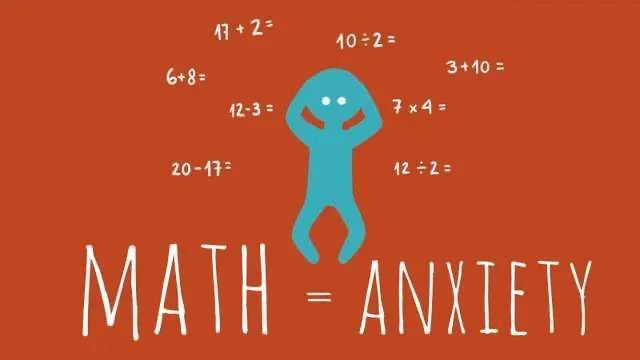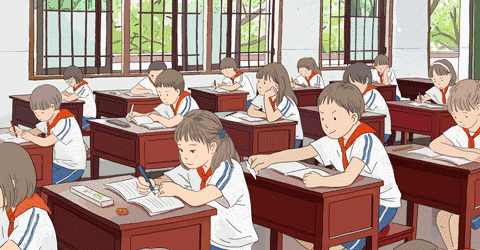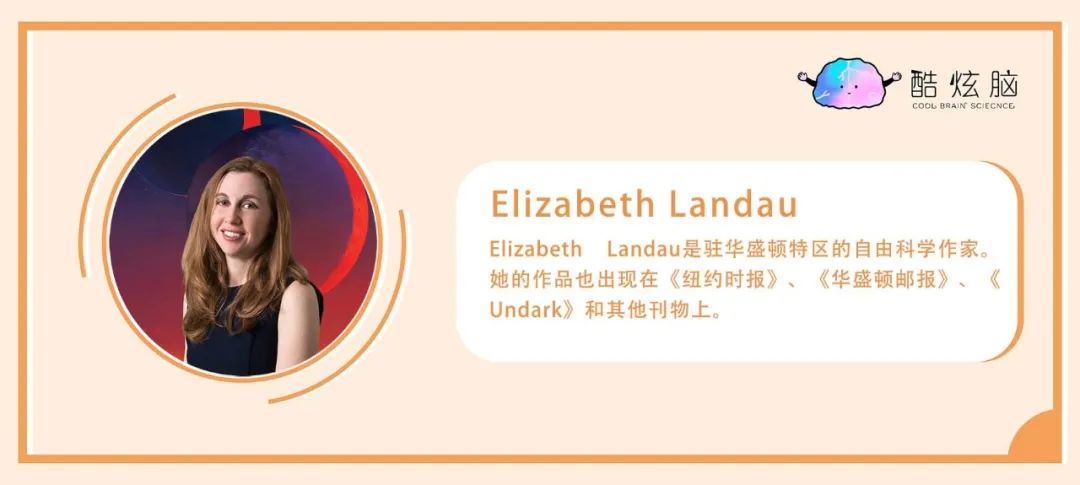You can't learn the culprit of mathematics, it may be mathematical anxiety
Author:Cool brain Time:2022.09.15


Via: pixabay
The following is the audio of the full text of Miss Sister
Author | Elizabeth Landau
Translation | Caroline
Grade -Cool Brain Creative
Reading | Pigeon Tsai
Artist | Jenny
Edit | Sales increase
The "mathematics anxiety" of not learning mathematics may be related to culture. This article provides some feasible suggestions on reducing "mathematics anxiety".
When Professor Ken ONO, a well -known American mathematician in the United States, talked about a specific formula of the peripheral rate, he would be excited.
He showed me a clip in the national geographical program, and the host Neil was asking how he would convey the charm of mathematics to ordinary people on the street. In response to the answer, Professor ONO showed Neil a so -called renewal of the peripheral rate, which was a bit like a mirror corridor of a mathematical happy house. The molecules and denominates of the score are not a number, but the denominator also contains a score. The denominator of this score also has a score, so repeated and endless. Write it, this formula looks like a staircase. When you are pursuing an elusive circularity, its steps will narrow. This calculation is independently completed by British mathematician Leonard Jay Rogers and Indian mathematician Srinivasa Ramanujan, a self -taught Indian mathematician, does not involve any ratio Add, divide, and flat numbers are more complicated. "No one can deny his beauty," said Ono, the director of the Department of Mathematics at the University of Virginia.
As a person who is also a pupil, I am famous for holding a weekly party in my friends. I have to agree with his point of view, that is, the peripheral rate is a dazzling formula. But not everyone can see beauty from scores or general mathematics. In fact, in the United States, mathematics often stimulates people's fear rather than awe. In the 1950s, some educators began to observe a phenomenon that they called students mathematical phobia, although this was only one of the long string of academic phobia they saw in students. Today, according to some estimates, nearly one -fifth of the American adults suffer from high -level mathematical anxiety. A 2016 study found that 11%of college students experienced "high -level mathematics anxiety and need to accept psychological counseling". Essence

Tuyuan Internet
According to a study by the University of Stanford and the University of Chicago in 2020, mathematical anxiety seems to be generally related to the world's mathematical results. Although there are still many questions about the root causes, high school mathematics in the United States is often significantly lower than that of high school mathematics in many other countries. For example, in 2018, American students' mathematics scores in the International Student Evaluation Project (PISA) test ranked 30th in the world.
Some scholars believe that the negative stereotypes of mathematics in American culture have been saturated. In addition, the current method of teaching this discipline has made people in a state of anxiety for a long time, making some children think that their mathematics is poor, which may reduce their excellent gains. The possibility of grade. Studies have shown that human beings are born with a feeling of numbers, the so -called digital nature. In other words, we already have the ability to do basic mathematics, but culture hinders it. Recent neuroscience, behavior and cognitive studies can help us redesign the educational methods for mathematics, so that they support it, rather than reduce children's learning motivation, and even stimulate people's mysterious and elegant love for mathematics in the process.
The theme of mathematics is far -reaching and has a wide range of scope. It covers everything from counting to quality to algebra. But at the most basic level, science shows that we all have a sense of quantity. Human babies can understand this concept as early as 6 months old, far before they come into contact with human culture or language in large quantities. In one study, researchers found that 3 -year -old children with a high sense of intuitive digitalness during infants were significantly higher in the test of mathematical results. In 2013, research by Duke University's psychologist Elizabeth Brannon found that students can improve their estimated quantitative capabilities by training and thereby improving mathematical levels.
The ability to estimate and understand the quantity may have evolved into a basic survival skill. For example, it can help our ancestors and members of other species quickly evaluate whether they are surrounded by predators, or foraging in places with more foods compared to other species. Andreas Nieder, the University of Tubinson, Germany has studied the number of digital perceptions of a variety of species. He believes that the cognitive system that perceives the number is independent and peaceful in monkeys, birds, and insects. These species are far away from the evolutionary tree. Pigeons can be trained to peck on the blackboard for a certain number. Dolphins seem to understand the concept of "less". According to another study, bees can master the concept of "zero".
However, scientists seem to have a consensus, that is, only humans can psychologically accurately use symbols to represent numbers, and we need some kind of education to do this. This is probably because many high -level mathematics skills, including arithmetic, depend on the use of language. For example, a 2004 study surveyed a user named Amazon language called Mundurukú. This language did not have more than 5 numbers of numbers. Not good. "In the 2013" Neuroscience and Education Trends ", a study compared the relative mathematical ability of educated and unadested Western adults, and found that they had great differences in the estimation ability of large numbers. Via:" Genius Gunners "

If we have the innate ability of mathematics and admit that it understands the importance of the world, why do so many people-mainly Western culture-unwilling to accept mathematics? In response to this problem, scholars studying mathematics and mathematics education feel confused.
Perhaps this is related to the way Americans tend to conceptual mathematical ability. Westerners often say that "my mathematics is not good." Jordan Ellenberg, a professor of mathematics at the University of Wisconsin Madison, said: "Compared with other school subjects, I think people have more fixed mentality. This is a one Quite misunderstanding. "
Of course, some children do have clinical learning disabilities, but they are not caused by anxiety, cultural myths or bad teaching. Developmental calculation disorders are a clinical term that refers to people with mathematical learning impairments, affecting about 3%to 7%of the population. This is very similar to the unknown reading disability, and these two situations often occur together.
In fact, I believe that bad mathematics will become a prophecy of self -realization. Evidence shows that women's skills in mathematics are not as good as men's cultural assumptions that may cause the gap between the gender of mathematics. The concept of racial setting will also destroy the results. Ebony McGee, a professor of diversity and STEM education at the University of Van Derbolt, spent more than ten years to study the systemic racism in the field of STEM. In her book "Black, Brown, and Broadness: How to Still Innovation in Global STEM Education", she pointed out that black, aboriginal and Latin students often report "isolation, feel or position as lack of ability" And other ethnic bias. These prejudices scattered their learning energy and consumed their energy.
Mathematical anxiety may also be passed on to children from teachers and parents. An evidence of 2017 research in the United States shows that children who interact with highly mathematical anxiety are lower than their peers. Jo Boaler, a researcher at this study, said: "Neuroscience clearly shows that everyone is growing on the road of growth. There is no one who is called a genius, and then his talent is here. So far. "
Even if a child is "talented" or "clever", or tells them that there is a "mathematical brain", it may have unexpected consequences. I feel the same. When I was in high school, I liked to learn advanced mathematics in the "Genius" summer course, but in the first semester of the university, I struggled in multiple calculus and was convinced that this talent had expired. No one told me that my frustrating long -night study was just to get a B, which should be part of a life journey. On the contrary, like many others, I just did not take any math courses.
Via: "Genius Gunner"

For a long time, a key issue of mathematics educators is how to teach extensive concepts and deeply understanding, and at the same time, the parts that children are often scared in the classroom are often the most afraid of: memory and duplicate.
More than a decade ago, most states in the United States have adopted national standards for mathematics, setting their ambitious goals for students from kindergarten to 12th grade learning. These standards are not only suitable for the content of mathematics teaching, but also the way of mathematics teaching. One of the goals is to shift teaching methods from exercises and memory to more emphasis on understanding mathematical concepts and relationships between them. The author of the papers in AERA's open magazine in 2021 wrote that the study of whether the new standards have led to the improvement of mathematical results are "scarce and warning." In the study of the Chicago School, they found that when teachers received special training for implementing standards, the results, pass rates, and test results of those poor performances increased significantly.
Boler and his colleagues advocate the mathematical framework of California, which is a set of teaching standards for the common core standards to combine the concept of mathematics into a "concept" related to the life world. For example, third-grade students can learn the concepts such as scores and polygons in the background of floor tiles-these concepts are usually taught separately. By combining these concepts, "teachers can focus on fewer things, but they are richer in connections," she said. Boler's memory exercises were very disgusted, and she said that this exercise would cause mathematics anxiety. Boller said that the fact that the facts of mathematics, such as 8 by 8 are still important, but courses that emphasize their significance and scenario correlation can help students learn them. A seemingly opposite view comes from Barbara Oakley, the author of "Heart of Digital". She believes that in the final analysis, learning mathematics is more like learning language or learning music, not like other forms of learning. She wrote in a personal article about how she wrote about how she turned to mathematics in her later years and became a mathematician. Repeating and memory is essential, and focusing on understanding the concept rather than death The method of backing will destroy the effect of mathematical learning. Although this seems to be a debate, no course is a pure concept driver or a pure memory driver. Everyone needs to understand the concept, but they also need to practice using them. In fact, students who rely on memory to learn mathematics-the United States has ranked high in the past-in the mathematical assessment of international student evaluation programs, their performance has always been worse than those who pay attention to the relationship between concepts.
There is a way to combine the concept and practice, called "block". It involves converting the materials you need to learn into "big blocks", that is, "information fragments that combine meaning through meaning". This idea is that, by decomposing major problems, concepts, or big processes, you can concentrate on solving all parts of digestible parts.
In the interview, Oakli often uses the example of reversing. If you have never driven a car, you need to think about the entire order of action that happened. Look at the rearview mirror, check the blind spots, pour the car back, turn the steering wheel, and so on. But once you often reverse, it will become your instinct-you don't even think about those separate steps. Oakli wrote that it can also be said for any mathematical principles you try to learn. She outlines the three steps for block learning: focus on the division, understand the basic concepts behind the information, and view its background. When you remember and practice each piece thoroughly, you can integrate them into larger pieces, which is connected in concept.
Boler also advocated more multi -sensory learning methods and pointed out the research published by cognitive neuroscience Vinod Menon in 2015. Mei Nong and his colleagues at Stanford University found that when a child studied a mathematical problem, the five different brain areas were active, and two of them were related to the visual path. She believes that if mathematical lessons involve more visualization and other sensory components, they will use these mathematical learning networks.
She said: "When they use mathematics or modeling or math, all these will help develop these different parts of the brain." A paper published in 2016 in the magazine of "Application and Computing Mathematics" also pointed out Even higher mathematics is highly visual.
In Ireland, the research team of Flávia Santos has been exploring how to use mathematics and music to help children with obstacles. Neuroscience research supports this view, that is, in terms of common brain areas that activate in related activities, there is a correlation between mathematics and music.
Santos pointed out that mathematics and music are inherent systems with symbols. It is impossible to prove that it will lead to the excellent performance of the other, but the score, ratio and pattern recognition are important for both. Therefore, Santos believes that music training may be good for mathematical learning. Studies have shown that music can enhance space-time reasoning ability, thereby supporting the learning of mathematical concepts. So far, there are hope, although only a small part of the group has been observed. For example, in a research in 2020 in the "Psychology Frontier" magazine, her group reported that in a small sample in Brazil, the training of singing, percussion and physical exercise and the test of mathematics understanding tests are positive. connect.
Tuyuan Internet
Every child has specific needs, so parents can formulate targeted methods with their teachers. However, in general, parents can create a positive mathematical attitude by avoiding sharing their own mathematical anxiety and encouraging creativity. "Never share it with your children, 'My math is not good', 'I hate mathematics', etc., we know that any of these claims will have a negative impact on students."

Professor ONO's father is a professor of mathematics at Johns Hopkins University, and he has urged him to pursue mathematics since he was a child. Professor ONO said: "For a long time, mathematics means calculation or memory." But he had a real enthusiasm for mathematics in grade in 10th. Maryland's home in Luuseville. The letter was beaten with rice paper, from the widow of Srinivasa Ramanujan, a mathematician Srinvasa Ramanujan, who died at the age of 32. She thanked Professor ONO's father for helping to build his half -body image to commemorate Lamanuyan. Lamanu has overcome various obstacles-racial prejudice, poverty, and drop out of college two times-eventually became one of the most influential mathematicians in the 20th century. Professor ONO saw the similarities between Ramananan's story and his own father's mathematics journey. The continuation formula proposed by Ramanuyan made Professor ONO persist on the road of mathematics. Professor ONO later engaged in academic work and became famous in the mathematical industry for solving the mysteries and problems in Lamanuyan's work.
"For me, Lamanuyan symbolizes the real creativity and the flying of imagination. You may think this is like a poem from the mind of a great poet," Professor ONO told me. "You don't know where it came from. Then you must think deeply and appreciate those text or formulas on a page of paper. This is now intoxicated by me."
Via: "Dragon Sakura"
Reference (click slide to view)
1.Furness, E.L. Are We Victims of Linguaphobia? The Modern Language Journal 42, 20-22 (1958).

2.ASHCRAFT, M.H. Moore, A.M. Mathematics Anxiety and the Affective Drops in Performance. Journal of pscyhoeductional assessment 27, 197-205 (2009).
3.Richardson, F.C. Suinn, R.M. The Mathematics Anxiety Rating Scale: Psychometric Data. Journal of Counting Psychology 19, 5510554 (1972).
4.foley, a.E., et al. Et Al.
5.reas, e. Our Brains have a map for numbers. Scientific American (2014).
6.Xu, F., Spelke, E.S. Goddard, s. Number Sense in Human Infants. Developmental Science 8, 88-101 (2005).
7.Starr, A., Libertus, M.E., Brannon, E.M. Number Sense in Infancy Predicts Mathematical Abilities in ChildHood. Propedings of the National OF Sciences 110, 18116-181816-18106-18106-18106-18106-18106-1810
8.Park, J. Brannon, E.M. Training the Approximate Number System Improves Math Proficience. Psychology Science 24, 2013-2019 (2013)..
9.morell, v. no job: pigeons ace a simple math test. Science.org (2011).
10.Jaakkola, K., Fellner, W., Erb, L., Rodriguez, M., Guarino, E. Understanding of the concept of numerically “less” by bottlenose dolphins (Tursiops truncatus). Journal of Comparative Psychology 119, 296 -303 (2005) .11.howard, S.R., Avargués-Weber, A., Garcia, J.E., Greentree, A.D., Dyer, A.G. Numerical Ordering of Zero in Honey Bees. Science 360, 1124-1126 (2018).
12.Pica, P., Lemur, C., Izard, V., Dehane, S. Exact and Approximate Arithmetic in An Amazonian Indigene Group. Science 306, 499-503 (2004).
13.Nys, J., Et Al. Does Math Education Modify the Approximate Number System? A Comparison of Schooled and UNSCHOOLED Adults. Trends in NeurosCience and Education 2, 13-22 (2013).
14.Allensworth, E., Cashdollar, S., Gwynne, J. Improvements in math instruction and student achievement through professional learning around the common core state standards in Chicago. AERA Open (2021). Retrieved from DOI:10.1177/2332858420986872
15. Boaler, J. Zoido, P. Math Education in the us doesn n’t add up. Scientific American Mind (2016).
16.Menon, v. SALIENCE Network. In Toga, A.W. (ED.) Brain Mapping: An Encyclopedic Reference, Volume 2 Academic Press, Cambridge, MA (2015).
17. Boaler, J., Chen, L., Williams, C., Cordero, M. Seeing As UNDERSTANDING: The Importance of Visual Mathematics for Our Brain and Learning.
18.Ribeiro, S. Santos, F.H. Enhancement of numeric cognition in children with low achievement in mathematic after a non-instrumental musical training. Research in Developmental Disabilities 62, 26-39 (2017).
Cool brain long -term collection of brain science and psychological articles, welcome to submit
Please submit a mailbox: [email protected]
Click here, let friends know that you love brain science


- END -
[Learn and implement the spirit of the 14th Provincial Party Congress] Jinta County: Multi -measures and forged the "hard core" power of rural revitalization

Jinta County has always adhered to the hard core forces that consolidate the cadre...
Puyang City held the "99 Public Welfare Day" event sprint meeting
The Charity Public Welfare News (Reporter Liu Lian) Recently, the Puyang Charity Federation of Henan Province held a sprint meeting of the Rural Rejuvenation Henan Specialty and Tencent 99 Charity Da